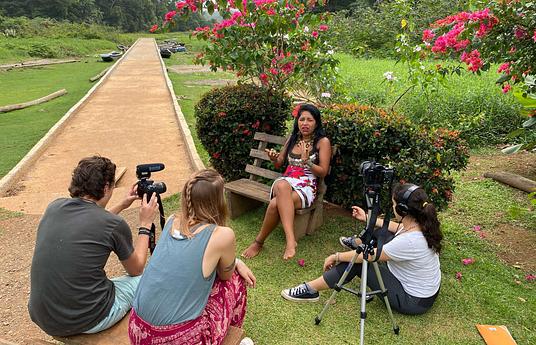Our education system is indisputably outdated. From the 1800s onwards, our schools have encouraged compliance to churn out the orderly factory workers who’d boost rapid industrialization. But in today’s V.U.C.A. world, we must challenge the very notion of compliance in class. The time has come to get creative and help our education system blossom into impact-driven learning.
Long before learners were asked to engage in Zoom meetings, they lacked motivation. Most learners already fell into the bottom rungs of Paul Schlechty’s Levels of Engagement: Rebellion, Retreatism, and Ritual Compliance. While Rebellion involves what teachers call “acting out,” Retreatism characterizes the more “checked out” students. Ritual Compliance, in turn, captures most learners, who “get by” in doing the bare minimum at school. We’ve been using words like acting out, checking out, and getting by to describe our students for years. Clearly, this is not a pandemic problem; it's a systems problem.
And the root of the problem is that we have inverted the metrics of learning, all in the name of ‘education.’ In fact, we’ve disjointed our school curriculum from the world it exists in, siloed traditional subjects, and increased the amount of “need to know” content in each discipline. No wonder the majority of learners haven’t moved beyond “Ritual Compliance” (Schlechty, 2011). Instead of falling in love with learning for the sake of learning, they are chasing the carrot at the end of the stick, whether that’s standardized testing, grade point averages, or college admissions.
Regurgitating Google-able facts on standardized tests simply isn’t motivating. Educators, students, and even parents know this, yet those leading our national and international education systems prefer the status quo because it’s easier. And yes, it is easier to quantify, rank, and organize our students this way. But what would learning look like if we just wanted our children to learn?
What would our education system become if we moved away from content-driven compliance and followed the neuroscience at the heart of learning?
It would at the very least enable students to be intrinsically motivated through relevant project-based learning. But engaging students with relevance is just the starting point. Once we have unshackled our students, it won’t take long to empower them through impact-driven learning.
Impact-driven learning engages learners to collaborate on multidisciplinary solutions for ‘wicked’, real-world problems alongside societal stakeholders.
This style of learning challenges students and stakeholders to identify, diagnose, and develop action plans together, solving local and global issues. Impact-driven learning is already implemented in a number of ways around the world, from simulations and authentic project-based learning to global service-learning but it is still far from becoming mainstream. And if we are to tackle the problem of student motivation, we need to truly move away from content and into relevant problem-solving.

Many readers may disregard this as mere idealism, but impact-driven learning has been at the core of my praxis in various educational contexts for the last 15 years. Whether they were public, private, religious, secular, local, or global, I’ve witnessed exceptional learning outcomes in a range of impact-driven schools.
At Mountain View High School, a public school in Northern Virginia, I taught a course that encouraged learners to take on a range of community service projects through the Learn and Serve America initiative. Our goal was simply to cultivate student leaders who’d tackle unmet needs in their community while simultaneously providing an enriching educational experience.
As a curriculum designer and educator at THINK Global School, we made the world our classroom by applying project and place-based learning to global contexts. Students learned about the different countries they were studying in, connected their location to interdisciplinary learning outcomes, and developed unique, engaging products that showcased evidence of their growth.
As an independent consultant, I also helped design curriculum for schools that prioritize learning over traditional education. Learning communities like BIT School in Mexico City utilize place-based learning to truly engage and inspire youth. By using their city as a learning context, students at BIT are encouraged to connect their classes to museums, businesses, and local organizations.
Most recently, my team and I have launched Meta Learning, an alternative educational model centred around making a positive societal impact. Our programs aim to future-proof our learners by empowering them to solve problems inspired by the United Nations’ Sustainable Development Goals. Meta students tackle these alongside professionals and industry experts, both locally and abroad.
Looking back, I never had to use words like Rebellion, Retreatism, and Ritual Compliance to describe student behaviour at these schools. Instead, our learners were visibly engaged and intrinsically inspired in each of these impact-driven learning models. We witnessed an exceptional increase in attendance and engagement, and we even saw numbers rise on standardized test scores and report cards. Clearly, when you empower students to apply their education to real-world contexts, their learning is exponentially greater and the level of engagement soars.
Asking ourselves in what ways learning can positively affect students, schools, and communities around the world isn’t mere idealism; it’s the right thing to do. So, how about that shift from compliance-based education to impact-driven learning?



